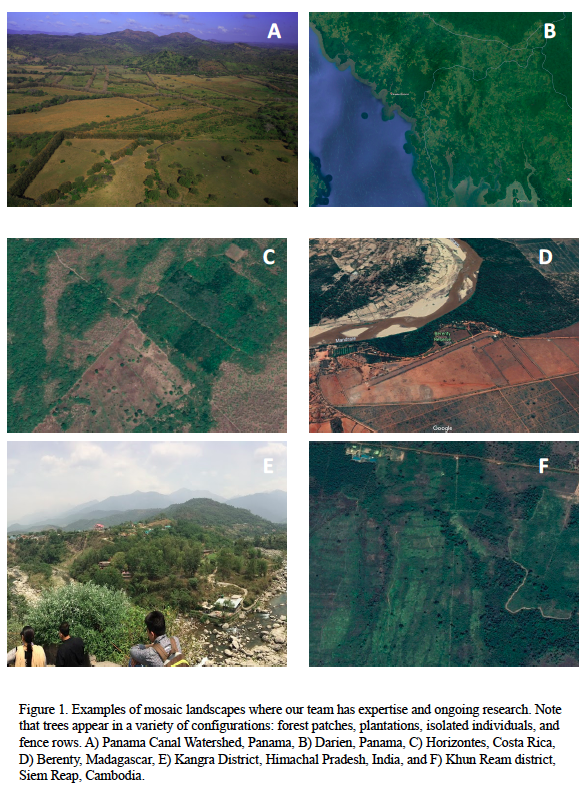While tropical forests are often thought of as expansive seas of green trees that extend as far as the eye can see, the reality is that most tropical landscapes now exist as dynamic mosaics of land uses (Figure 1).
Trees in these “mosaic landscapes” are present in remnant patches of primary forests, regenerating in young secondary forests, planted in home gardens or plantations, isolated as shade trees in pastures, or propagated in fence rows. While theories of how biodiversity is maintained within mature and second growth forests are increasingly well developed (Leigh et al. 2004, Chazdon 2014), we currently lack a systematic framework for understanding the ecological value or processes that maintain trees in tropical mosaic landscapes.

From an ecological perspective, we need to quantify how forest fragmentation across entire landscapes alters the demographic processes that maintain tree populations, and what landscape parameters aid or prevent population maintenance. For example, current ecological approaches such as population models do not account for changes in the genetic diversity of a tree population that might be due to people planting trees, or selectively harvesting them.
From a social sciences perspective, the role of people, markets, policies, and institutions in tropical forest management has been widely studied (Geist and Lambin 2002, Moran and Ostrom 2005, Agrawal et al. 2018), and these studies have demonstrated that people living in forest mosaic landscapes include many of the world’s poorest and most vulnerable (Sunderlin et al. 2008, Angelsen et al. 2014).
But these studies have not integrated robust measures of the role of people in sustaining or disrupting ecological processes beyond simple measures such as remotely sensed forest cover, and much like their ecological counterparts, and only a few have dealt with the role of people in creating and managing mosaic landscapes (Fairhead and Leach 1996). We argue that this knowledge gap exists because traditional ecological and social scientific conceptual models are insufficient to understand the dynamics of species that exist in landscapes dominated by humans. A robust and predictive framework to understand the ecological and social processes that affect trees in mosaic landscapes requires a novel approach that integrates social science and ecology. In addition to bolstering ecological theory and applied ecology, such a synthesis is also critical to inform large-scale policy initiatives such as the Aichi Biodiversity Targets and the Bonn Challenge to restore and reforest 350 million hectares of degraded land by 2030.
Updates and Announcements
- New Publication: "Pitfalls of Tree Planting Show Why We Need People-Centered Natural Climate Solutions," September 16, 2020
- Fall 2020 launch of ICGC Topical Workshop (DSSC 8310)
- May 2020 Virtual Workshop